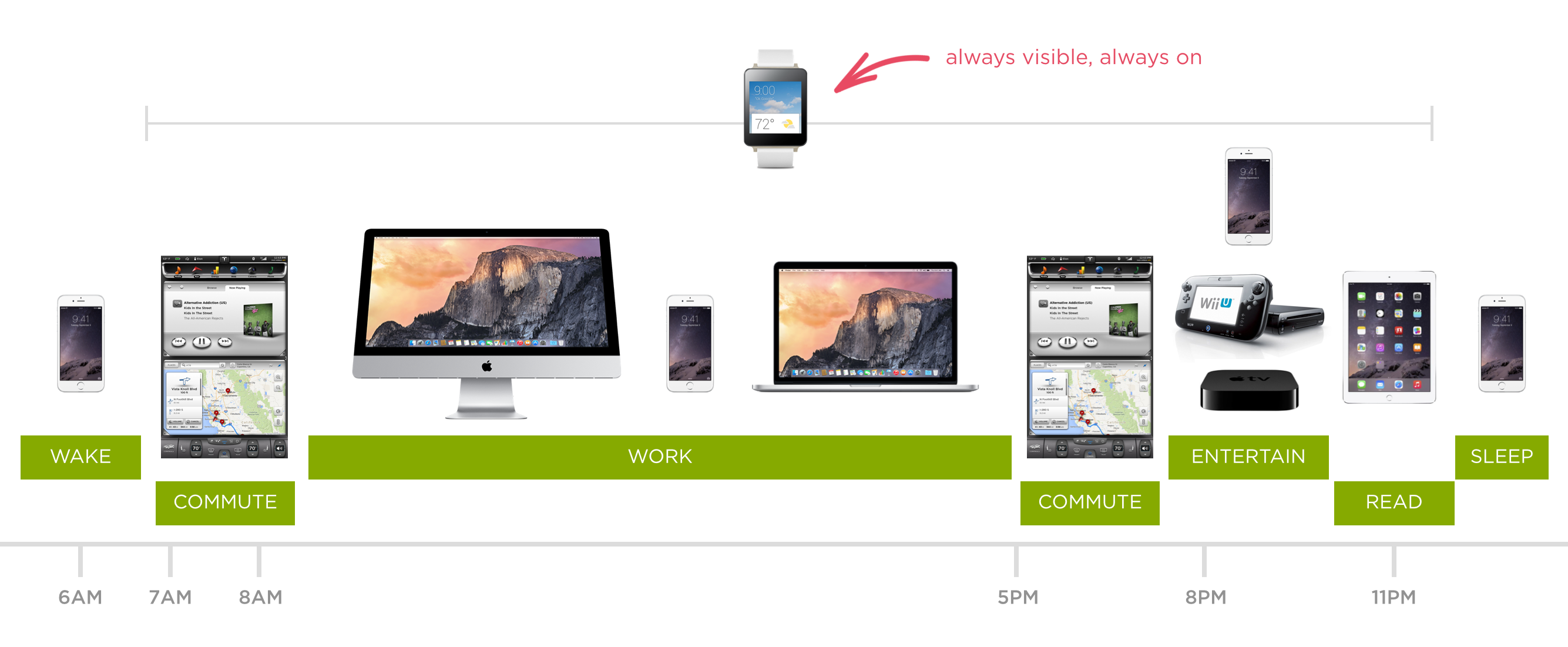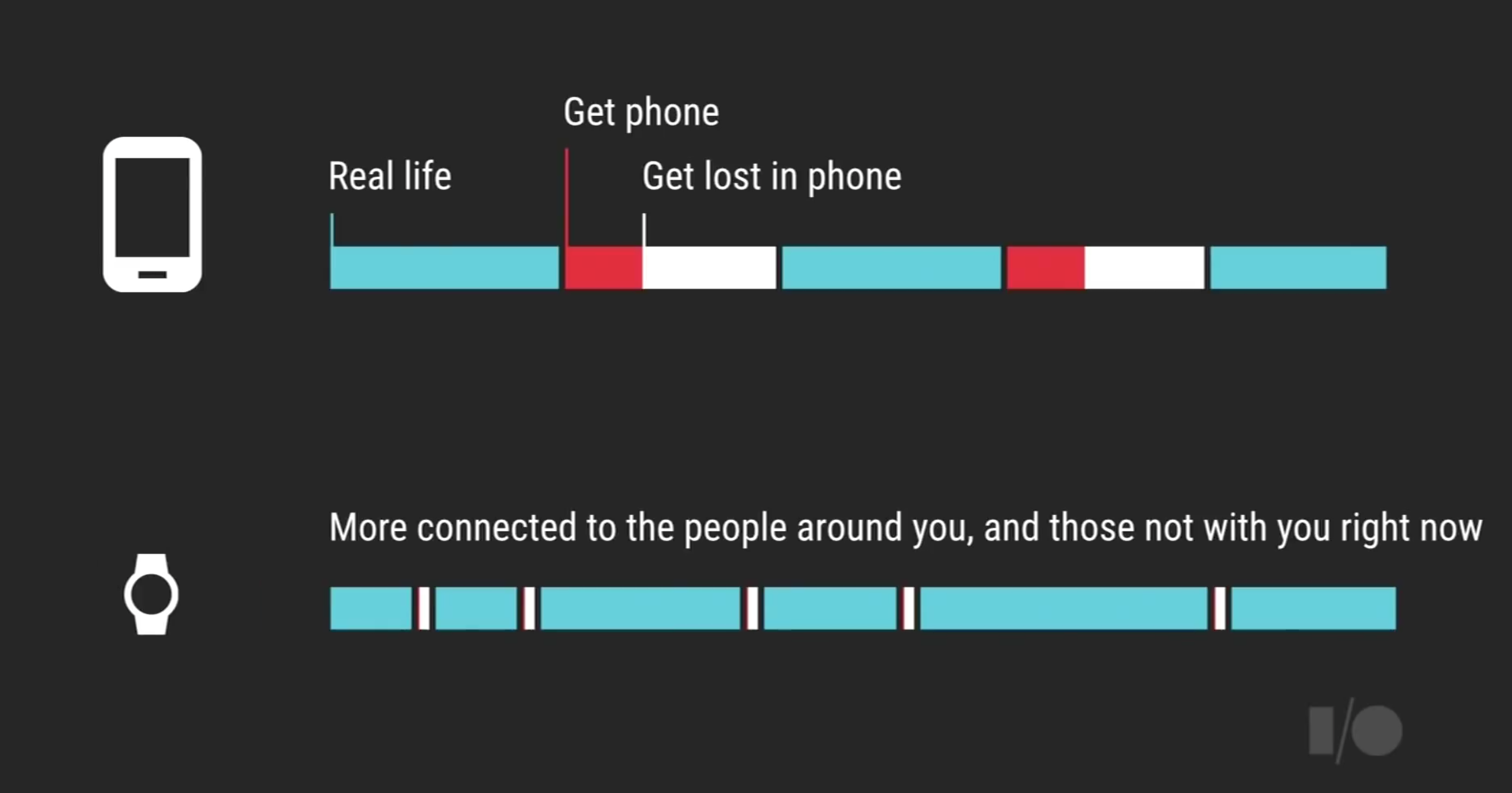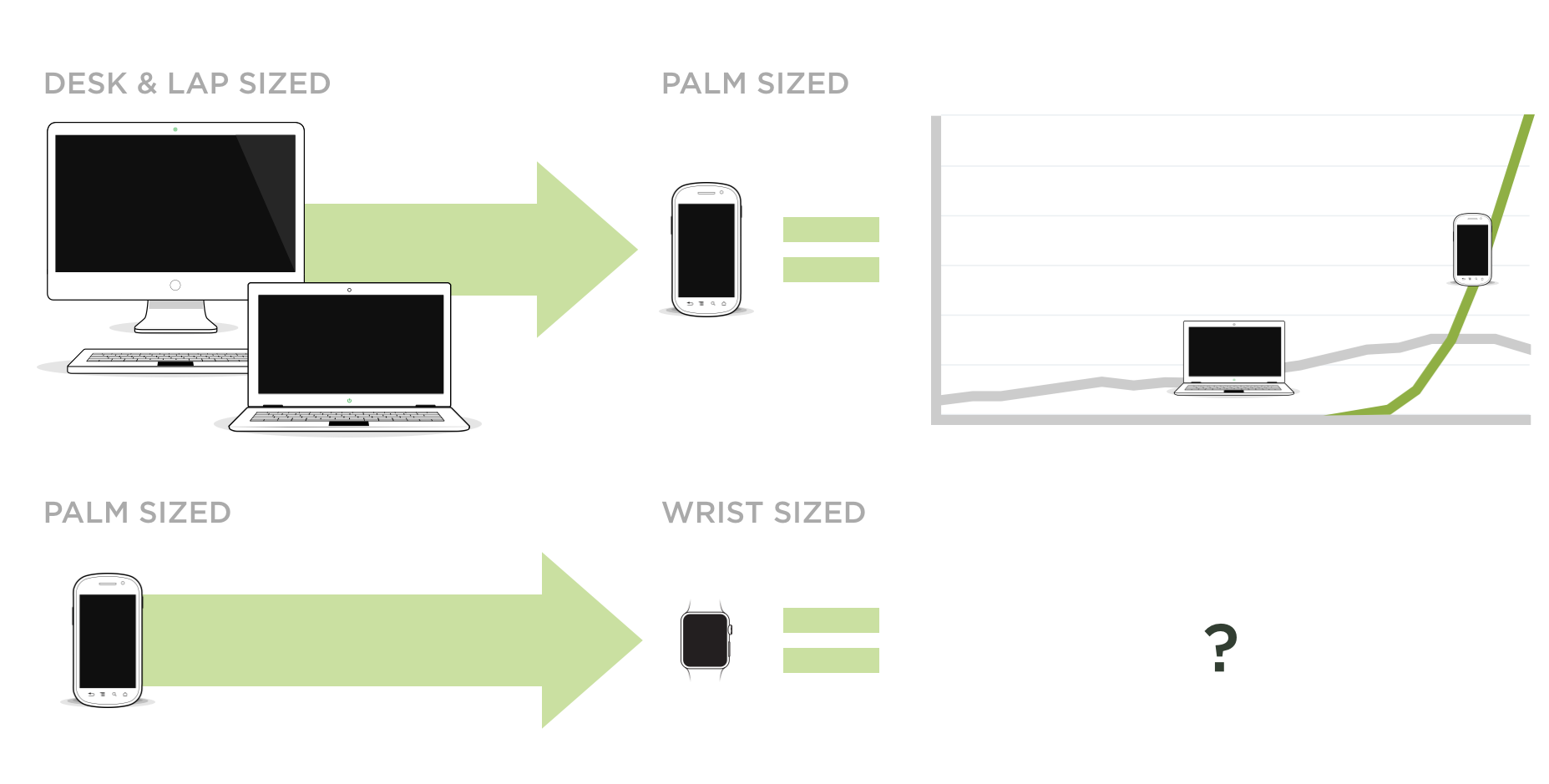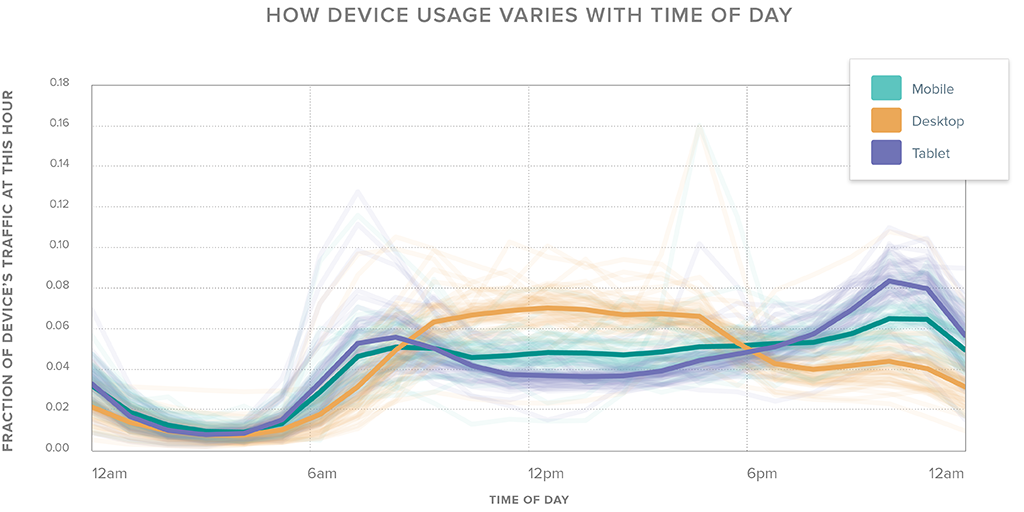The always on, always connected nature of smartphones made the Internet accessible everywhere and anytime. This dramatically changed our relationship with software. Apps became more personal, social, and relevant to our daily lives. All because of a change in form factor: from desk/lap to palm-sized screens. So what happens when networked screens show up on our wrist?
In today's multi-device world, switching between phones, laptops, and other connected devices is increasingly common place. Desktops take over during working hours, tablets come out at night, and smartphones cover everything in between.
All of these devices require a lot of attention: pull them out, turn them on, open an app, repeat. Smart watches, on the other hand, enable instant, even peripheral, access to the software and information we've made part of our lives. By virtue of being on our wrists, smart watches are not just immediately visible but always on (us). This change in form factor changes our relationship with software once again.

Software designed for our wrists works best as timely, glance-able information. As Google's wearables team articulated at Google I/O last year: "Phones often distract us and take us out of the World. Wearables provide much more compact experiences that are as short as possible and as fast as possible." Think actions, not apps.

Over the past six months, I've regularly kept my Android Wear watch (a Moto 360) powered up. During the day I triage email and keep up with my schedule of meetings on my wrist. I even follow stocks, weather, and my commute times on my Moto 360. The end result has been that my phone comes out of my pocket a lot less.
@AndrewGent @lukew Nope. Been wearing Androidwear for months - you see the actual content, take quick actions, rarely pull out phone.
— Sara (@trisaratopsRAWR) March 8, 2015At the end of the work day though, I take my smart watch off. Once the meetings are over and communication with my team slows down, there's a lot less value in glance-able micro-interactions. Ongoing fitness data collection would be give me further reason keep it on but the Moto 360's heart rate sensor is spotty, slow, and the steps it tracks mean little to me.

So can a wrist-based device go beyond utility and enable casual social interactions or track health data that matters? We'll find out soon with the Apple Watch which is aiming to fulfill all three of these needs...
